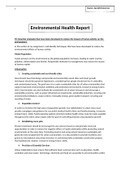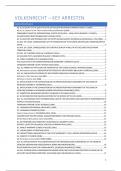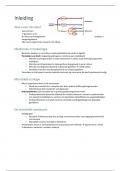1 Name: Zae12Mcmorrow
Environmental Health Report
P3- Describe strategies that have been developed to reduce the impact of human activity on the
environment.
In this section of my assignment, I will identify techniques that have been developed to reduce the
environmental effects of human activity.
Global Population
It puts pressure on the environment as the global population increases, leading to water scarcity,
pollution, deforestation and famine. Responsible methods for management may reduce the misuse
of human capital.
Urbanisation
1. Creating sustainable and eco-friendly cities
Government laws that design and provide environmentally sound cities and smart growth
techniques should be passed by legislatures, considering that people should not live in unhealthy
and contaminated areas. The goal here is to create sustainable cities for all urban communities that
support improved environmental conditions and protected environments. (conserve-energy-future,
2021) Governments can also facilitate the sustainable use of urban resources and encourage a
sustainable economy, such as green infrastructure investments, sustainable industries, recycling and
environmental initiatives, waste control, renewable energy, green public transport, recycling and
recycling of water.
2. Population Control
In order to minimise the high rates of population growth, key stakeholders in urban areas must
provide campaigns and guidance for successful medical health clinics and family planning. (conserve-
energy-future, 2021) Family planning options-oriented medical health clinics must be made available
throughout the entire urban region with the goal of controlling diseases and population growth.
3. Establishing more jobs
Private investment should be encouraged to use natural resources and generate more job
opportunities in order to reduce the negative effects of rapid urbanisation while protecting natural
environments at the same time. Promoting tourism and using natural resources sustainably will
generate more employment for urban communities. It is also possible to provide incentives and
grants to international and private investors in environmentally sustainable construction projects
that facilitate job creation. (conserve-energy-future, 2021)
4. Provision of Essential Services
Urban stakeholders must ensure that sufficient basic social services such as education, health,
sanitation and clean water, technology, electricity and food are accessible to all communities within
,2
urban areas. The aim here is to provide and introduce job opportunities and activities to build
resources so that people can earn a living to pay for the services' maintenance. (conserve-energy-
future, 2021) The government may also use subsidies to minimise the costs of basic healthcare, basic
education, electricity, education, public transport, communication systems, and technology.
Population Density
1. Exercising the choice
Most of us have the authority to choose the size of our families in the developing world, but we may
also face constraints of all kinds over the size of the families we choose to have. When making
decisions about that, it is important to note that through our high level of consumption and
greenhouse gas emissions, individuals in the rich parts of the world have a disproportionate effect
on the global environment. For example, in the UK, each person generates 70 times more carbon
dioxide emissions than anyone from Niger. When we consider the consequences of an increasing
population for our world and the future of our children, we will realize that choosing smaller families
is one good option that we can make. (populationmatters.org)
2. Poverty and Social Justice Alleviating
The UN predicts that population growth will be dominated by the world's very poorest countries
over the next century. It is not only a basic human right to escape poverty, but a crucial way to
minimise birth rates. Above all, these solutions help to minimise poverty. (populationmatters.org)
Moreover, reduced infant mortality also leads to smaller family sizes through increased access to
health care and greater economic opportunities. International assistance, fair trade and social justice
are all instruments that contribute to getting the global population back to a sustainable level. A
more equitable distribution of resources and a move away from our damaging economic structures
that are based on growth are essential to a better future for people and the earth.
3. Empowering Women and Girls
Fertility rates plummet as women and girls are encouraged to choose what happens to their bodies
and lives. Empowerment implies freedom to pursue education and a career, economic
independence, easy access to sexual and reproductive healthcare, and the end of horrible injustices
such as child marriage and abuse based on gender. Overall, one of the most important solutions to
our biggest environmental and social problems is improving the rights of women and girls.
(populationmatters.org)
4. Education
One of the most effective levers for sustainable development is ensuring that every child gets a
quality education. Many children are out of school in developing countries, with girls affected more
because of gender inequality than boys. Education opens doors and provides a "way out" for
disadvantaged children and young people. The number of years a woman spends in education and
how many children she ends up having are directly correlated. African women with no education
have 5.4 children on average, according to one study; women who have completed secondary school
have 2.7 and those who have a college education have 2.2. (populationmatters.org) When family
sizes are smaller, women are also empowered to receive education, take a job and enhance their
economic opportunities.
5. Removing barriers to contraception
, 3
About 200 million women who choose to prevent pregnancy are not actually using modern
contraception. There are a range of reasons for this, including lack of availability, side-effect issues
and social pressure not to use it (often from male partners). These women live mainly in some of the
poorest countries in the world, where the population is projected to increase by 3 billion by 2100.
(populationmatters.org)
Overseas funding for family planning support is important, ensuring that all levels are adequately
high and that service delivery is productive and goes hand in hand with advancing gender equality
and engaging men. Some individuals around the world prefer not to use contraceptives because they
are impacted within their nations or cultures by stereotypes, traditions and pressures.
(populationmatters.org) Rather large family sizes are considered desirable in some places; the use of
contraceptives is discouraged or banned in others. A crucial aspect of effective family planning
programmes has been engaging with women and men to shift attitudes about fertility and family
size. It can also be reversed or side-lined by religious obstacles. In Iran, when the religious leader of
the country announced the use of contraceptives was compatible with Islamic belief, a very active
family planning campaign was launched. (populationmatters.org)
Intensification of agriculture
1. Efficient water and carbon use
Instead of ploughing, farmers growing biotech crops have been able to make use of no- or reduced-
tillage systems that use weed control. This helps boost soil quality and water retention, in addition
to saving fuel and cutting emissions, by reducing runoff and not inverting the soil, allowing moisture
to be trapped. It also allows more effective conservation of carbon in the soil. Therefore, 70 percent
of all water consumption is accounted for by agriculture. Given that many scientists expect a
worsening drought and hotter temperatures around the globe, if the EU is to fulfil its ambitious
energy and environment agenda, agriculture will need to adapt to climate change. Biotech
companies are experimenting with crops that can be modified to be drought and salt tolerant, or
less dependent on fertilisers, opening up new areas for farming and increasing productivity, as well
as helping to reduce the amount of CO2 in the atmosphere by increasing the amount of oxygen in
the ecosystem. Biotechnology can contribute by helping farmers reduce pollution and water loss.
(ec.europa.eu)
2. Saving on pesticides
Although long-standing controversies remain about the merits of biotechnology for reducing the use
of pesticides, there is some evidence that, at least in Europe, farmers have succeeded in reducing
the cost of pest control when growing biotech crops. Only one such crop for food use is currently
approved for commercial cultivation within the EU. (ec.europa.eu) That crop, produced and
marketed by the US company Monsanto, is MON 810 maize; Spain is the only country where it is
grown to any significant extent. The product of Monsanto is a type of Bt maize, which gives plant
resistance to corn borer attacks, a pest prevalent in Europe that thrives in warmer climates and
attacks stalks primarily through damage caused by tunnelling. In traditional crops, chemical control
of borers is difficult because insecticide sprays are only successful within a short timeframe.
3. Place in future farm policy
Biotechnology, particularly as an innovation-based science within the EU 2020 Smart Growth
Strategy, looks set to continue to have a position in EU farm policy. It is clear from the Commission's
November 2010 Correspondence on the future of the Common Agricultural Policy (CAP) that greater














